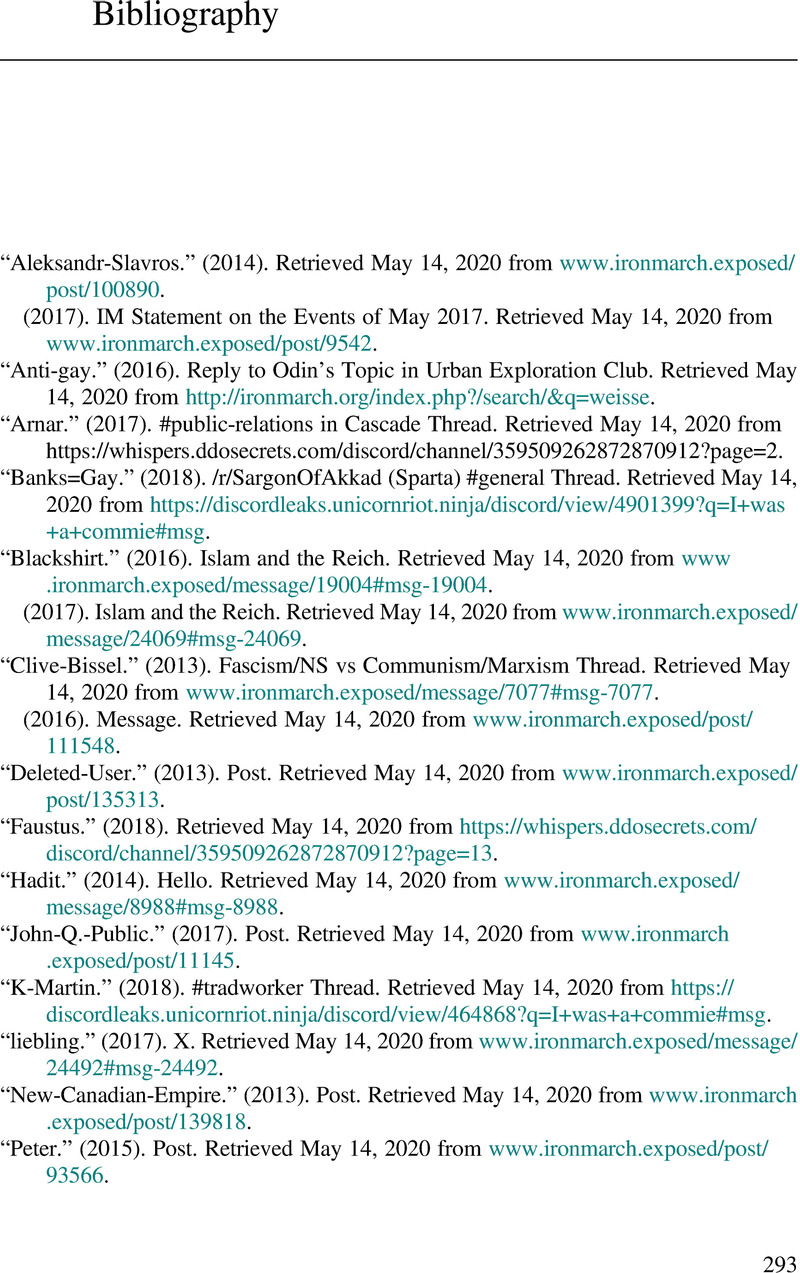Book contents
- From Traitor to Zealot
- From Traitor to Zealot
- Copyright page
- Dedication
- Contents
- Tables
- Foreword
- Preface
- Acknowledgments
- Abbreviations
- 1 Betraying the Cause?
- 2 Nation, Race, and Anti-Semitism
- 3 Joining the Far Left
- 4 Fighting on the Path of Allah
- 5 Who Are Extremist Side-Switchers and What Drives Them?
- 6 Breaking the Cycle
- 7 Conclusions
- Bibliography
- Index
- References
Bibliography
Published online by Cambridge University Press: 11 November 2021
- From Traitor to Zealot
- From Traitor to Zealot
- Copyright page
- Dedication
- Contents
- Tables
- Foreword
- Preface
- Acknowledgments
- Abbreviations
- 1 Betraying the Cause?
- 2 Nation, Race, and Anti-Semitism
- 3 Joining the Far Left
- 4 Fighting on the Path of Allah
- 5 Who Are Extremist Side-Switchers and What Drives Them?
- 6 Breaking the Cycle
- 7 Conclusions
- Bibliography
- Index
- References
Summary

- Type
- Chapter
- Information
- From Traitor to ZealotExploring the Phenomenon of Side-Switching in Extremism and Terrorism, pp. 293 - 328Publisher: Cambridge University PressPrint publication year: 2021

